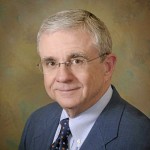51. Individuals enter the healthcare system to get measurements, to be diagnosed, to seek answers, treatment and learn. Individuals will seek alternatives outside of expensive, inconvenient care centers. This will drive positive overall change in the health system.

The current popularity of store-front urgent care centers underscores the truth in Thesis #51. These centers offer the convenience of walk-in service, usually reasonable prices, and easy access.
Many health systems have added urgent care to their offerings not only for convenience of the patient but also to decompress their primary care offices that often schedule so heavily that they cannot accommodate ill patients needing same-day care.
Primary care physicians often relish that decompression, which allows them to adhere more closely to a schedule and to take afternoons off without being called back by their offices. Indeed, the advent of urgent care (and hospitalists) has dramatically altered the life of a primary care physician from disorderly to orderly. Many now work predictable daylight hours without weekend or night call.
Younger patients who have not developed a strong relationship with their primary care physician may use urgent care regularly as a substitute for an assigned physician because of convenience.
Convenience comes at a cost, however. Patients may see their PCPs only when they are relatively well and may be shunted to urgent care when they are sick and in need of immediate care. Older patients may complain about not seeing their doctor when the need is greatest, but for many younger patients, urgent care is part of their new normal for traditional care.
One other distinct downside of urgent care is the focus on the problem and not the patient. The tenets of modern preventive care call for using every contact with a patient as an opportunity to address preventive care needs such as vaccinations and periodic evidence-based screenings. This happens only infrequently in the urgent care setting and can undermine the ability of a clinic to deliver first-rate preventive care through its primary care physicians.
Urgent care offices have opened a new opportunity for primary care physicians who for various reasons do not wish or enjoy long-term relationships with patients. Such physicians enjoy the “one and done” nature of the urgent care visit, often closed out with a standard advice to “see your regular doctor for follow-up.”
A parallel problem is that lack of follow-up may hinder the honing of an urgent care physician’s skills when the outcome of patient visits may not be known. Shared electronic health records does allow knowledge of that outcome in some situations, but only when the records are shared and only when the urgent care physician intentionally seeks that follow-up. It’s typical physician nature to believe he or she got the diagnosis and treatment right if there is no feedback on errors.
Alternative treatment venues for other needs such as surgery and imaging may be very attractive to patients if they are aware of the availability, payment structure and often reputation of these venues. Patients who see primary physicians employed by health systems will generally be referred to another health system physician or facility. Providers in these alternative settings are challenged to attract patients who tend to be locked into a particular health system.
Despite greater convenience and lower cost, patients may not seek alternative setting because of these fears:
· Fear of suboptimal care or untoward experience outside familiar surroundings
· Fear of incurring non-covered charges by being “out of network”
· Fear of going against personal physician recommendations
· Fear of loss of coordination of care
The magic combination of clearly evident convenience and clearly evident savings may be adequate motivation to seek care elsewhere, especially if a traditional setting is unaffordable.
